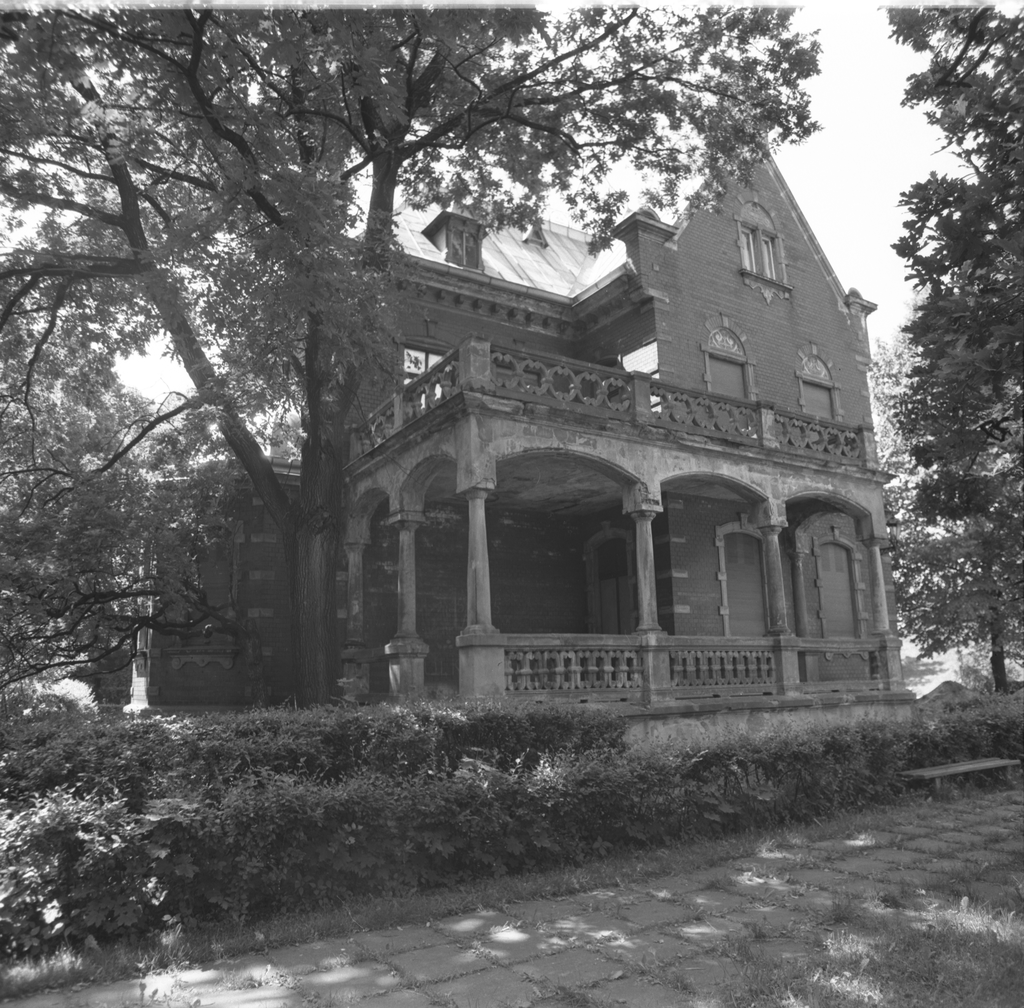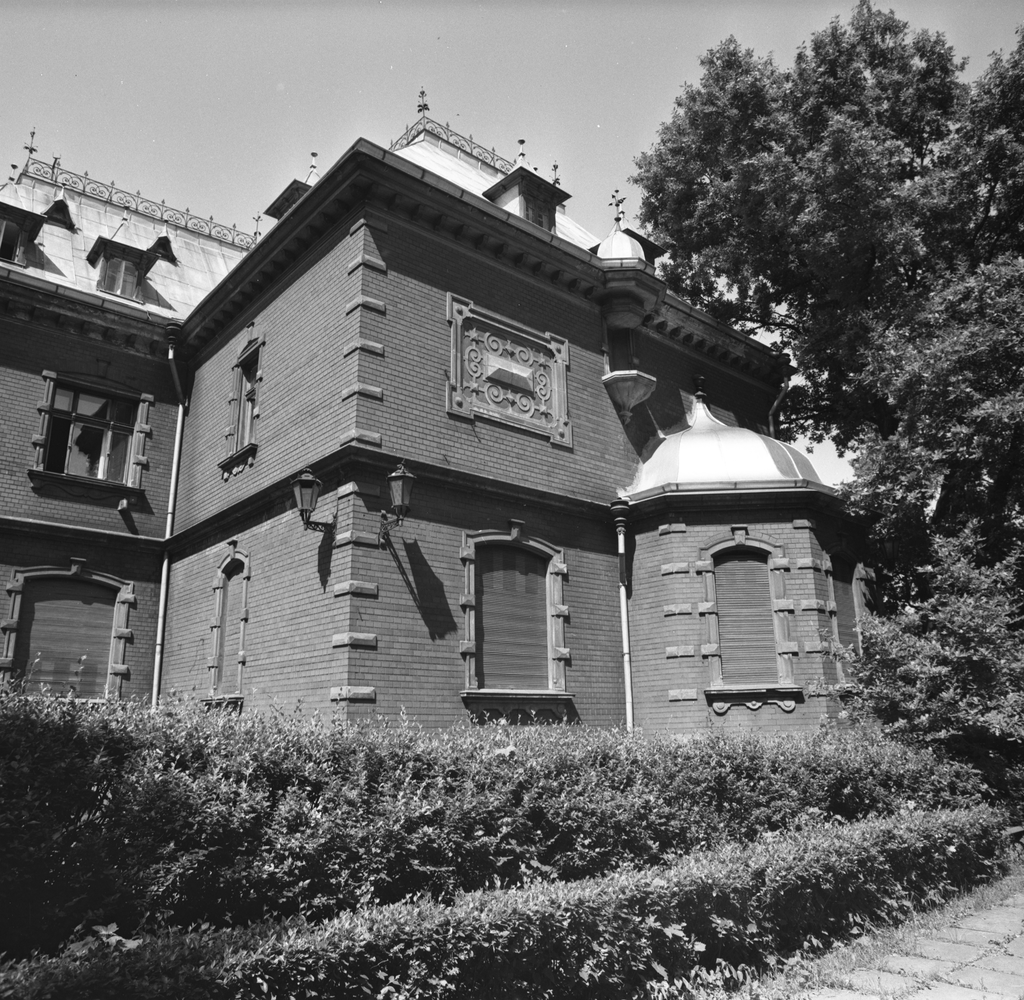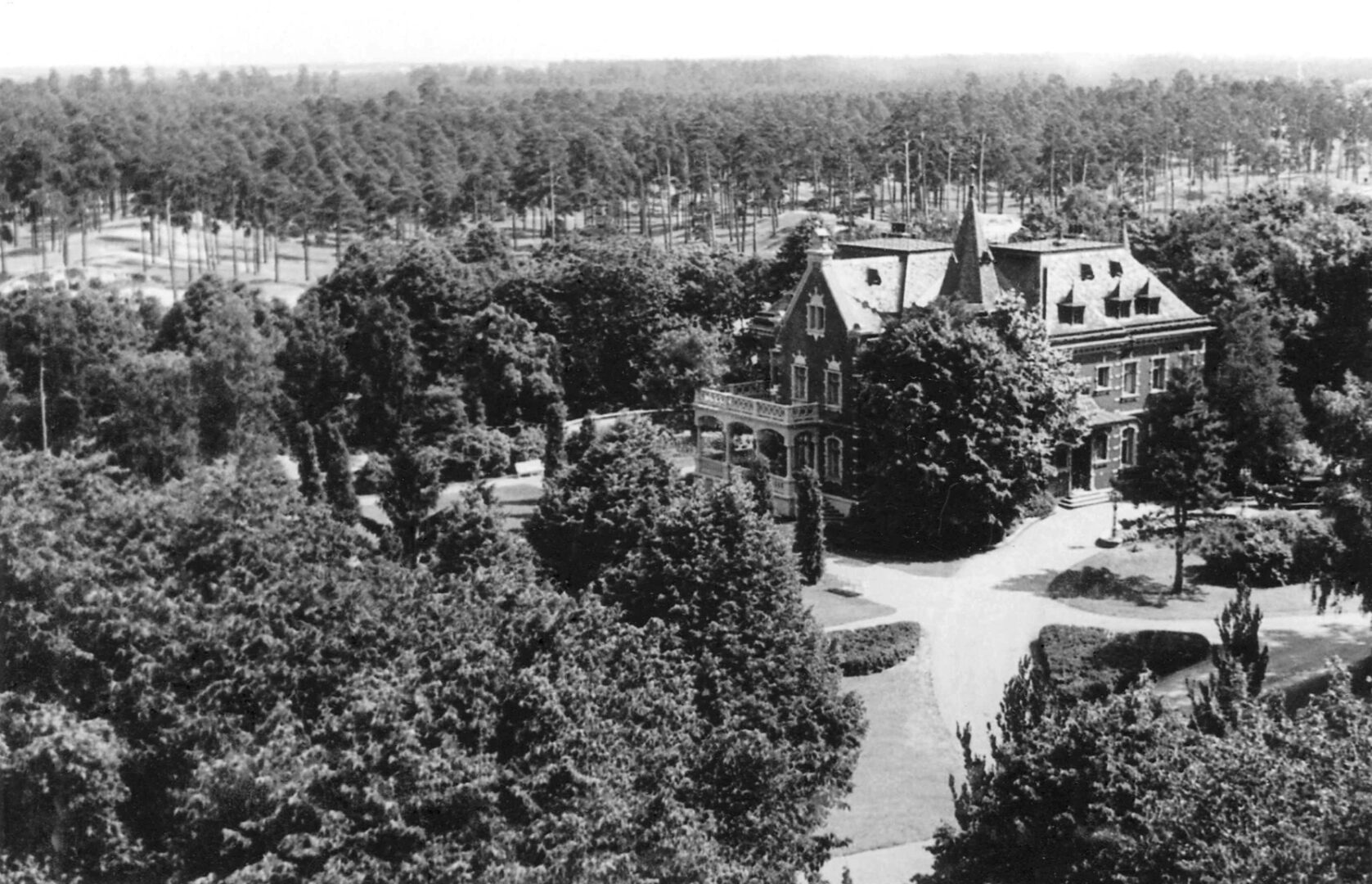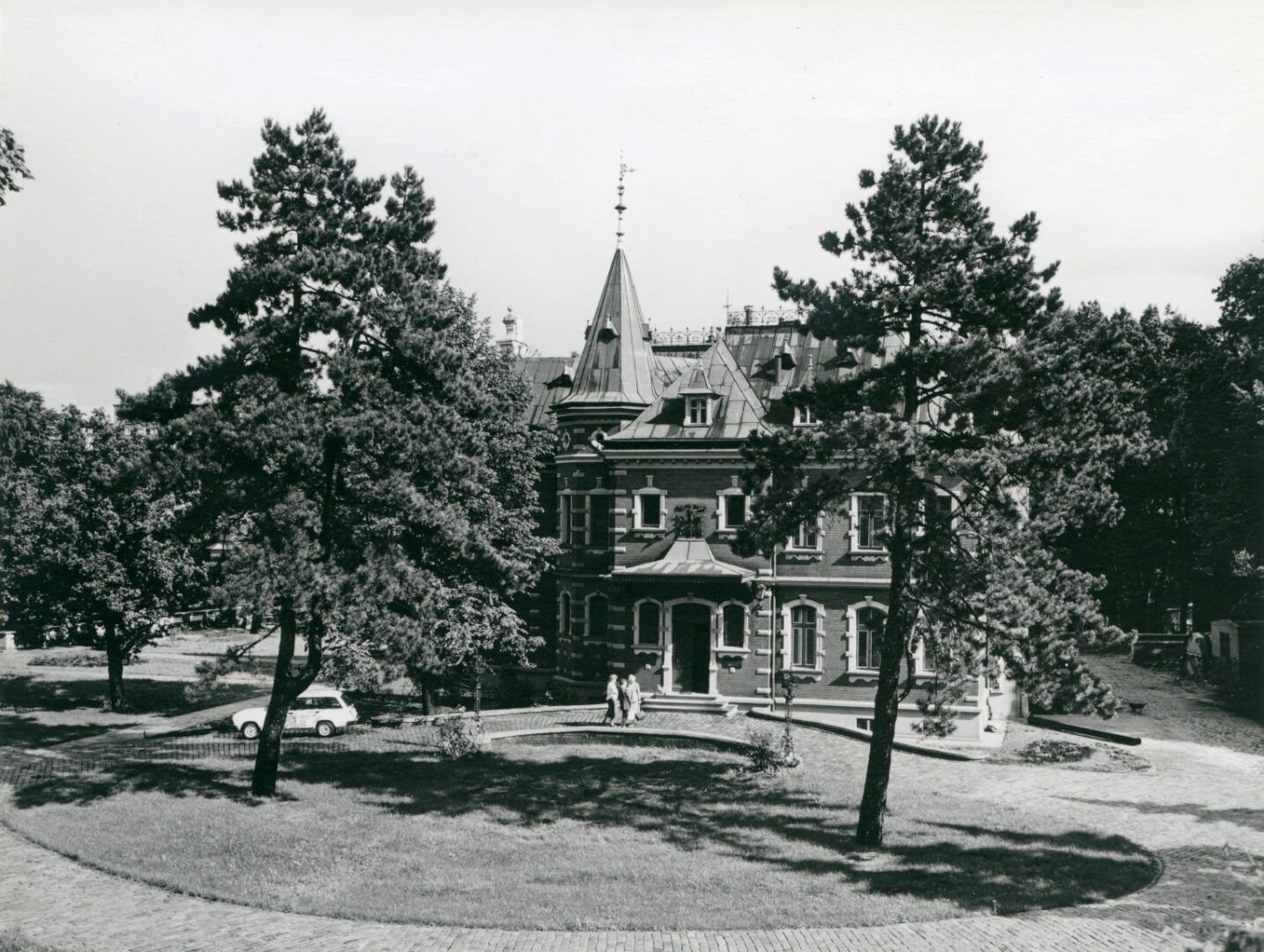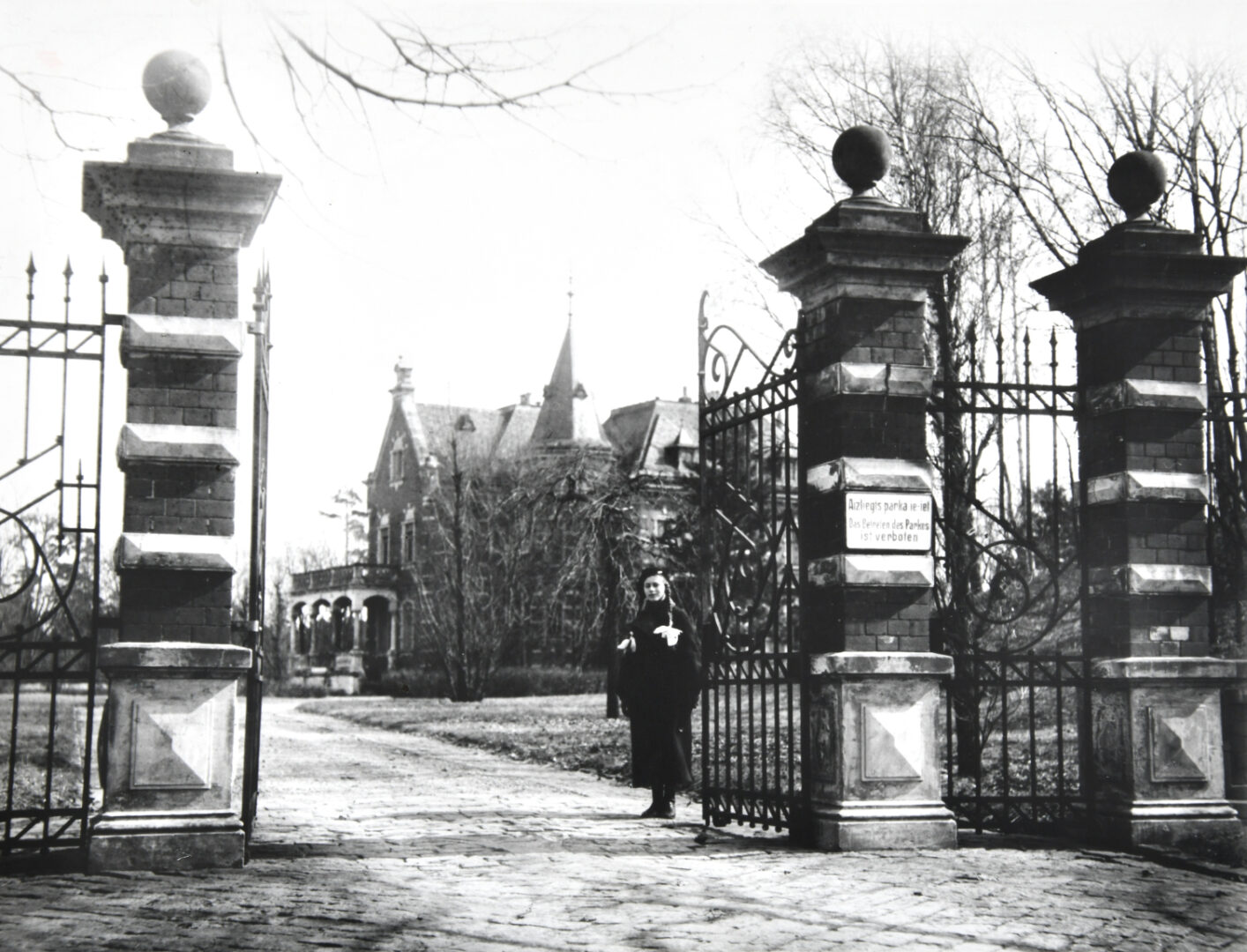Dauderi house history
In 1865, in Sarkandaugava, alongside sawmills and other production facilities, the “Waldschlößchen” (“Forest Castle”) Brewery was founded. Its founder was a Latvian farmer’s son, Johann Dauder or Jānis Daude (1820–1879). “Waldschlößchen” was originally a small brewery and beer storage with an adjacent glass bottle factory.
After the death of the brewery’s founder, Johann Dauder, in 1880, Adolf von Buengner (1855–1917) became the new owner of “Waldschlößchen”. Under his management, the brewery experienced rapid growth. The family contacts, financial means and ambition of von Buengner allowed the brewery to expand. In the 1890s, new production buildings were built and expanded.
In 1897–1898, Adolf von Buengner’s family home, the present Dauderi Villa, was built in the “Waldschlößchen” brewery’s territory. As with other Rigan factories, the owner lived in a luxurious mansion next to his factory. The building was designed by Fritz Seuberlich in the German Neo-Renaissance style, with reference to earlier architectural models. The villa was surrounded by a romantic landscape park with a pond. This miniature palace in its idyllic pine-dune landscape was considered “one of the most beautiful private houses in Riga”.
During World War I, the production in the “Waldschlößchen” Brewery ceased. During the Latvian Republic in the 1920s–1930s, beer production was never resumed, and the factory housed smaller workshops, warehouses and even an almshouse. In late 1936, the state-owned bank Latvijas Kredītbanka bought the entire factory territory and buildings from the shareholders.
From 1937 until the occupation of Latvia in 1940, Dauderi was the residence of the President and Prime Minister Kārlis Ulmanis. The luxurious villa and its landscaped surroundings were adapted to the needs of the authoritarian leader’s summer residence. Thus, in the late 1930s, Dauderi regained its former splendour and earned a new status that required special security measures. Meanwhile, the former “Waldschlößchen” production buildings became the foundation for the “Aldaris” brewery, founded in 1937.
During World War II and the occupations, the building was used radically differently. After the second Soviet occupation in 1944, the Dauderi Villa was taken over by Aldaris and, in line with the slogans of the Soviet regime, it was handed over to the “working people”. For the next 30 years, the building housed a kindergarten and agitation centre, and later it was used as Latvian SSR Ministry of Food Industry degustation and representation spaces. The premises were only minimally adapted to the new representational needs and the historic interiors remained relatively intact.
A new phase in the history of Dauderi started with the offer of the Latvian exile Gaidis Graudiņš in 1988 to donate his collection to Latvia. In February 1989, an agreement was signed between Gaidis Graudiņš and the State Committee for Culture on the donation of the collection. Graudiņš proposed that the Dauderi Villa – which still had to be restored – be chosen as the home for the museum.
After strenuous restoration work, the museum was opened to visitors on 27 June 1990, during the XX Latvian Song and X Dance Festival. In the following years, the core of the museum’s main exhibition was the collection donated by Gaidis Graudiņš. It was supplemented by temporary exhibitions.
Since 2010, Dauderi has been a department of the Latvian National Museum of History. With the support of Gaidis Graudiņš and funding from the Ministry of Culture, the main Dauderi exhibition has been modernised since 2019. In the new exhibition, the mansion’s historical milestones and the fates of Latvia’s cultural heritage create an insight into Latvia’s 20th-century history.
